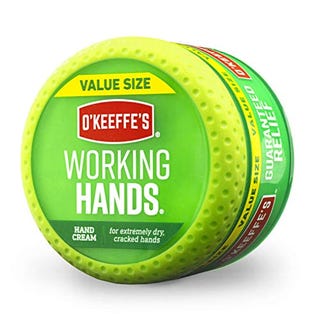How to Get Rid of Callus on Heel

Prostock-Studio Getty Images
If you're, say, an Olympic gymnast or a dedicated guitarist, you're probably very proud of your hard-earned calluses. But for the rest of us mere mortals, those hardened layers of skin can be painful and less than pleasant to look at.
"Calluses result from repeated friction, rubbing, pressure, and irritation on the skin," says Sandy Skotnicki, M.D., a Toronto-based dermatologist and author of Beyond Soap. They form wherever there's a constant source of friction—mainly the bottom of your foot, on the bony areas that carry your weight, including the ball, the big toe, and the side.
They can also form on the hands of anyone who performs a repeated action where there is constant rubbing, such as grabbing uneven bars, lifting weights, or even doing crafts, gardening, or housework. "Calluses are what your body does to protect you from trauma—it's like your skin developing armor or a shield," says Mona Gohara, M.D., associate clinical professor of dermatology at Yale School of Medicine and member of Prevention's Medical Review Board.
If you notice there is blood or redness inside the callus, it is causing you a great deal of pain, or you have diabetes or poor circulation, make an appointment with your podiatrist or dermatologist to have it evaluated and treated safely.
However, in many mild cases, calluses are not permanent and you can treat them at home with a method Dr. Gohara calls "soak, sand, and smear."
How to get rid of calluses safely
1. Avoid them in the first place by reducing friction.
To stop new calluses from forming and to give your old ones time to heal, add moleskin padding to the areas in your shoes where you feel the most friction, and wear protective gloves when you're working out or doing household chores that are rough on your hands.
2. Leave it alone.
If the callus isn't bothering you too much, you can just let it soften over time, but consider skipping those high heels or getting refitted for running shoes.
3. Soak in warm, soapy water.
To soften up the skin (and give yourself a relaxing spa experience while you're at it), soak your feet or hands in sudsy water. You can use any soap you prefer, but Dr. Gohara is a fan of epsom salts, which are anti-inflammatory and also have a bit of grit, which will help with the next step.
4. Try manual exfoliation ("sand" it).
After your skin has softened in the water, submerge a pumice stone, emery board, or foot file in water for a few seconds and use it to gently go over the hardened skin. (Be careful not to remove the entire callus, Dr. Skotnicki says, since the area still needs some protection against pressure.) Dr. Gohara says you can even use fine-grain sandpaper, for what she jokingly calls a "Home Depot pedicure."

Natural Earth Lava Pumice Stone
Pumice Valley amazon.com
$9.97

Working Hands Hand Cream
O'Keeffe's amazon.com
$14.57

Urea 40% Healing Cream
PurOrganica amazon.com
$15.49

Duragel Callus Remover Discs
Dr. Scholl's amazon.com
$5.99
5. Smear on the moisturizer.
Slathering on a hydrating moisturizer specifically formulated for the thick skin on your feet can help, says Dr. Gohara. (Aquaphor or even good old-fashioned Vaseline are great options).
To really get it to work, slather it on before bed and pull on a pair of socks. To soften calluses on your hands, rub on a thick hand cream such as O'Keeffe's Working Hands before bed and pull on cotton gloves to let it soak in overnight.
6. Use an exfoliating cream.
Dr. Gohara is a big fan of products containing urea (such as PurSources Urea 40% Healing Cream), which she says softens skin so effectively that it practically peels off the next time you soak it. Creams with salicylic acid (such as CeraVe Renewing SA Foot Cream) can also gently slough away your rough skin. Check in with your podiatrist or dermatologist before trying these, since these ingredients can be harsher, particularly if you struggle with a skin condition like eczema.
7. Try a medicated patch.
If you have a small callus in one specific pot, you can try to soften it off with products such as Dr. Scholl's Callus Removers or Mediplast. However, if it's a big callus that takes up a larger area on your foot, these might be too irritating, says Dr. Gohara. When in doubt, check in with your dermatologist if home treatments don't work or the callus becomes bothersome.
Go here to join Prevention Premium (our best value, all-access plan), subscribe to the magazine, or get digital-only access.
Marisa Cohen Marisa Cohen Marisa Cohen is a contributing editor in the Hearst Lifestyle Group's Health Newsroom, who has covered health, nutrition, parenting, and the arts for dozens of magazines and web sites over the past two decades.
This content is created and maintained by a third party, and imported onto this page to help users provide their email addresses. You may be able to find more information about this and similar content at piano.io
How to Get Rid of Callus on Heel
Source: https://www.prevention.com/beauty/skin-care/a35783630/how-to-get-rid-of-calluses/